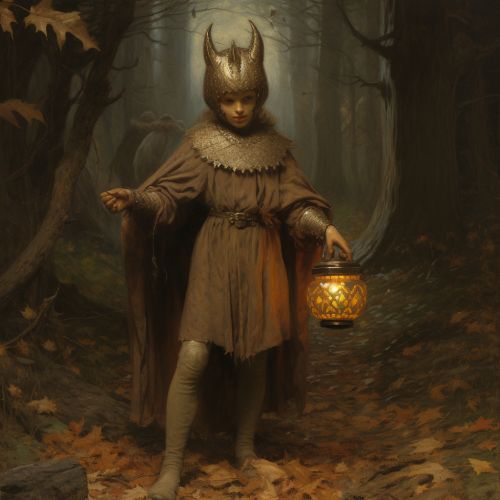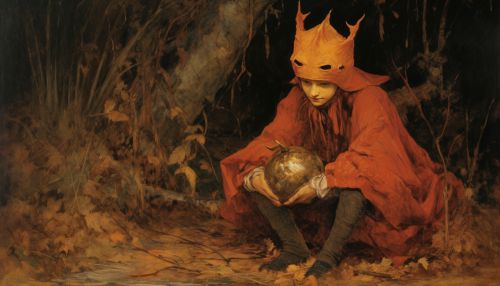Trickster
Overview
A Trickster is a character in folklore, mythology, and literature that exhibits a great degree of intellect or secret knowledge and uses it to play tricks or otherwise disobey normal rules and conventional behavior. It is a term that can be used contextually to depict a cunning or deceptive character in a story.
Mythology and Folklore
Tricksters are present in many forms of mythology and folklore around the world. They are typically portrayed as cunning, deceptive characters who use their wits and guile to achieve their goals, often at the expense of others. These characters can be both beneficial and harmful, often serving as both the protagonist and antagonist in different stories.


Characteristics of Tricksters
Tricksters are often characterized by their intelligence, cunning, and ability to deceive others. They are typically portrayed as being able to outsmart other characters, often through the use of tricks or deception. This is often done in a humorous or satirical manner, with the trickster character often being the source of comedy in the story.
Tricksters in Different Cultures
Trickster figures can be found in the folklore and mythology of many different cultures around the world. These figures often serve a similar role in their respective cultures, acting as a symbol of rebellion and resistance against established norms and rules.
Native American Tricksters
In Native American mythology, the trickster is often a key character. The trickster in these stories is often an animal, such as the Coyote or the Raven, who uses their cunning and intelligence to outwit other characters.
African Tricksters
In African folklore, the trickster is often represented by the spider, known as Anansi. Anansi is a character who uses his intelligence and cunning to outwit his enemies and achieve his goals.
European Tricksters
In European folklore, the trickster is often represented by the fox, known as Reynard. Reynard is a character who uses his intelligence and cunning to outwit his enemies and achieve his goals.
Tricksters in Literature
Trickster figures have been a common feature in literature throughout history. These characters often serve as a symbol of rebellion and resistance against established norms and rules.
Classical Literature
In classical literature, trickster figures often appear in the form of gods or demigods, such as Hermes in Greek mythology or Loki in Norse mythology. These characters often use their divine powers in combination with their cunning and intelligence to outwit other characters.
Modern Literature
In modern literature, trickster figures often appear in the form of anti-heroes or rogue characters, such as Sherlock Holmes or Han Solo. These characters often use their intelligence and cunning to outwit their enemies and achieve their goals.
